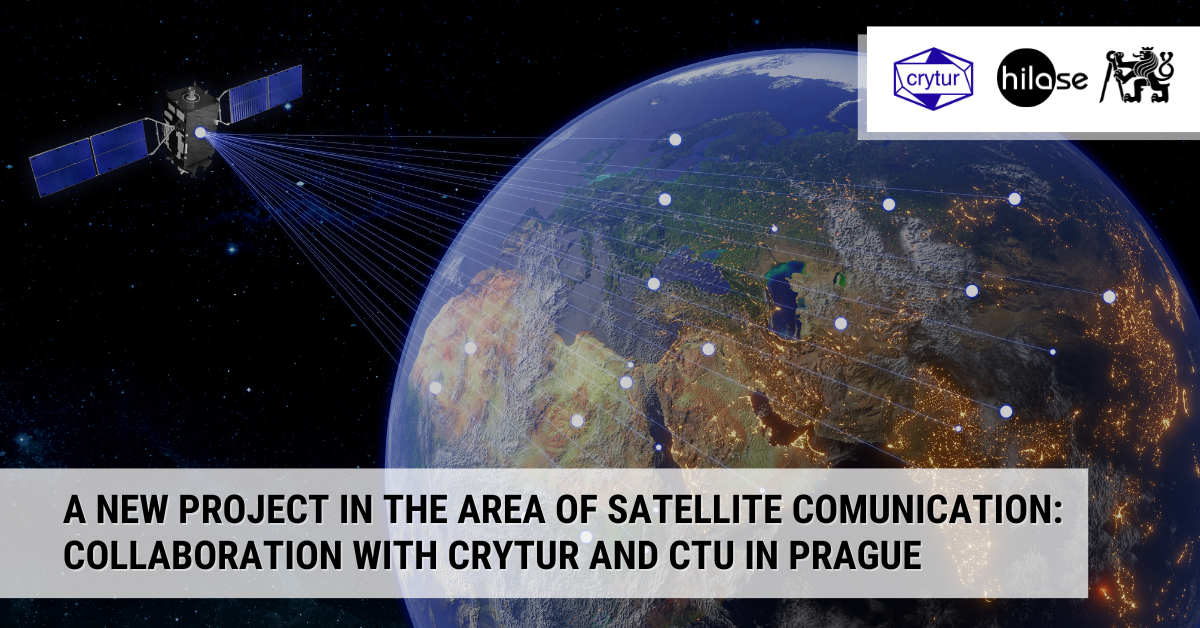In August of 2022, the HiLASE Centre started collaborating on a new project by the company Crytur. The Short-wave infrared high power laser for long-distance satellite communication based on a compact laser system using Ho:YAG thin disk emitting in the 2.1 um wavelength region project also includes the Czech Technical University in Prague as another collaborator, namely the Faculty of Nuclear Sciences and Physical Engineering, and the Faculty of Electrical Engineering. The project is being fulfilled under the ESA Open Space Innovation Platform (OSIP) platform.

The role of the HiLASE Centre in the project, spanning over 18 months, lies in the development of a suitable demonstrative (thin-disk) laser for the testing of data transfer on the 2um wavelength in a real environment. By joining in on this project, the HiLASE Centre is building upon its previous collaboration with Crytur in the area of component development for disk lasers, this time with a particular application.
Furthermore, the HiLASE Centre will also participate in the preparation of the optical part of the measuring apparatus and its representatives will take part in the measurement of the beam transmission parametres.
PROJECT ABSTRACT
Current communication with satellites at long distances or with spaceships is fundamentally based on radiofrequency communication and free space laser communication with conventional wavelengths below 1600 nm. We are proposing a new regime of communication based on high-energy laser operating at Short-Wave InfraRed (SWIR) wavelengths to achieve a more stable connection, high-speed data rate, and to provide optical data link with satellites in the deep space. Our proposed innovative SWIR laser solution is based on Ho:YAG (Holmium doped Yttrium Aluminum Garnet) thin disks emitting laser radiation around 2100 nm. This new wavelength together with the thin disk solution provides an enhanced range of use. It is lightweight and compact, allowing the system to be easily transported or carried on a smaller satellite. The SWIR laser operates in the water window for propagation in the atmosphere, requires less energy than standard systems, and allows both day and night operation thanks to lower solar irradiance in this wavelength region. The system does not require a clouds free sky to establish communication as it penetrates most clouds. Our solution upgrades the standard lasers by providing the new wavelength, tunability, and improved mechanical properties that result in greater vibration stability and beam pointing. Better propagation through the atmosphere will result in advanced performance in communication with the satellites in the Earth’s orbit and long-distance missions. Thanks to the operation in the 2100 nm wavelength region, the SWIR laser system is eye-safe which is an important feature when compared to the Nd:YAG lasers. We will build the core of the innovative SWIR laser running at tens of Watts and compare it with the standard lasers for communication. Though the commercially available detectors work currently up to 2500 nm in the GHz bandwidth range, their sensitivity is limited. Commercially available detectors still need to be developed further.














